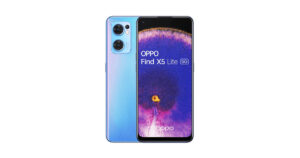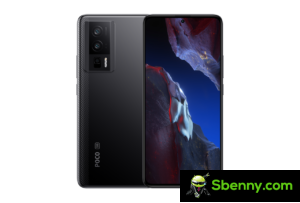We put the Realme GT Neo 5 (240W) through our rigorous SBMARK Battery test suite to measure its performance in autonomy, charging and efficiency. In these test results, we will break down how it fared in a variety of tests and several common use cases.
Overview
Key specifications:
- Battery capacity: 4600 mAh
- 240W charger (included)
- 6.74-inch, 1240 x 2772, 144 Hz, OLED display
- Qualcomm Snapdragon 8+ Gen 1 (4 nm)
- Tested ROM / RAM combination: 256 GB + 16 GB
Pros
- Outstanding charging experience
- Extremely fast wired charging, taking 11 minutes to replenish the battery
- Very high autonomy recovered after a 5-minute charging boost
- More than 2 days of autonomy when used moderately
- Low discharge currents when gaming
Cons
- Below-average autonomy when on-the-go
- High consumption of the charger when the fully charged device is still plugged in
- Very high consumption of the charger itself
The Realme GT Neo 5 (240W) achieved an excellent global score thanks to an outstanding charging performance and good showings in autonomy and efficiency. Its charging experience was the best we’ve tested so far.
Its autonomy lasted more than 2 full days when the device was used moderately. Autonomy was averages for individual usages such as calling or watching videos but was below average when on the go and listening to music. However, autonomy when gaming was good at more than 9 hours.
The Realme GT Neo 5’s strength lies with its powerful 240W wired charger, which fully charged the device’s battery in only 11 minutes, which is the fastest charge we have ever measured. The autonomy recovered after a quick 5-minute charge was also impressive, providing 16 hours and 21 minutes on average, which is 5 hours more than the previous best quick charge.
The Realme GT Neo 5’s charge efficiency was good, but the charger’s residual consumption when the fully charged phone was still plugged in was high, and the residual power drained by the charger itself was the highest in our database. Efficiency of the discharge currents was average overall, except for gaming, where the discharge current was low, meaning that the device is quite well-optimized.
Compared with devices from the High-end segment ($400-$599), the Realme GT Neo 5 (240W) reached the top of the ranking thanks to its charging score, which is the best so far in our database. Its autonomy and efficiency scores were slightly below average compared with other devices in this price range.
Test Summary
About SBMARK Battery tests: For scoring and analysis in our smartphone battery reviews, SBMARK engineers perform a variety of objective tests over a week-long period both indoors and outdoors. (See our introductory and how we test articles for more details about our smartphone Battery protocol.)
The following section gathers key elements of our exhaustive tests and analyses performed in SBMARK laboratories. Detailed performance evaluations under the form of reports are available upon request. Do not hesitate to contact us.
| Battery | Charger | Wireless | Display | Processor | |
|---|---|---|---|---|---|
| Realme GT Neo 5 (240W) | 4600mAh | 240W (included) |
– | OLED 1240 x 2772 |
Qualcomm Snapdragon 8+ Gen 1 |
| Realme GT Neo 3 | 4500mAh | 150W (included) |
– | OLED 1080 x 2412 |
Mediatek Dimensity 8100 |
| Nubia Redmagic 8Pro | 6000mAh | 65W (not included) |
– | OLED 1116 x 2480 |
Qualcomm Snapdragon 8 Gen 2 |
| Xiaomi Redmi Note 12 Pro+ 5G | 5000mAh | 120W (included) |
– | AMOLED 1080 x 2400 |
MediaTek Dimensity 1080 5G |
How Autonomy score is composed
Autonomy score is composed of three performance sub-scores: Home / Office, On the go, and Calibrated use cases. Each sub-score comprises the results of a comprehensive range of tests for measuring autonomy in all kinds of real-life scenarios.
80h
Light Usage
Active: 2h30/day
55h
Moderate Usage
Active: 4h/day
34h
Intense Usage
Active: 7h/day
Home/Office
A robot housed in a Faraday cage performs a set of touch-based user actions during what we call our “typical usage scenario” (TUS) — making calls, video streaming, etc. — 4 hours of active use over the course of a 16-hour period, plus 8 hours of “sleep.” The robot repeats this set of actions every day until the device runs out of power.
On the go
111
Samsung Galaxy M51
Samsung Galaxy M51
Using a smartphone on the go takes a toll on autonomy because of extra “hidden” demands, such as the continuous signaling associated with cellphone network selection, for example. SBMARK Battery experts take the phone outdoors and perform a precisely defined set of activities while following the same three-hour travel itinerary (walking, taking the bus, the subway…) for each device
Calibrated
113
Samsung Galaxy M51
Samsung Galaxy M51
For this series of tests, the smartphone returns to the Faraday cage and our robots repeatedly perform actions linked to one specific use case (such as gaming, video streaming, etc.) at a time. Starting from an 80% charge, all devices are tested until they have expended at least 5% of their battery power.
How Charging score is composed
Charging is fully part of the overall battery experience. In some situations where autonomy is at a minimum, knowing how fast you can charge becomes a concern. The SBMARK Battery charging score is composed of two sub-scores, (1) Full charge and (2) Quick boost.
Full charge tests assess the reliability of the battery power gauge; measure how long and how much power the battery takes to charge from zero to 80% capacity, from 80 to 100% as shown by the UI, and until an actual full charge.
The charging curves, in wired and wireless (if available) showing the evolution of the battery level indicator as well as the power consumption in watts during the stages of charging toward full capacity.
The time to full charge chart breaks down the necessary time to reach 80%, 100% and full charge.
With the phone at different charge levels (20%, 40%, 60%, 80%), Quick boost tests measure the amount of charge the battery receives after being plugged in for 5 minutes. The chart here compares the average autonomy gain from a quick 5-minute charge.
Efficiency
129
Oppo Reno6 5G
Oppo Reno6 5G
How Efficiency score is composed
The SBMARK power efficiency score consists of two sub-scores, Charge up and Discharge rate, both of which combine data obtained during robot-based typical usage scenario, calibrated tests and charging evaluation, taking into consideration the device’s battery capacity. SBMARK calculate the annual power consumption of the product, shown on below graph, which is representative of the overall efficiency during a charge and when in use.
Charge up
156
Nubia RedMagic 7 Pro
Nubia RedMagic 7 Pro
The charge up sub-score is a combination of four factors: the overall efficiency of a full charge, related to how much energy you need to fill up the battery compared to the energy that the battery can provide; the efficiency of the travel adapter when it comes to transferring power from an outlet to your phone; the residual consumption when your phone is fully charged and still plugged into the charger; and the residual consumption of the charger itself, when the smartphone is disconnected from it. The chart here below shows the overall efficiency of a full charge in %.
Discharge
117
Apple iPhone 14 Pro
Apple iPhone 14 Pro
The discharge subscore rates the speed of a battery’s discharge during a test, which is independent of the battery’s capacity. It is the ratio of a battery’s capacity divided by its autonomy. A small-capacity battery could have the same autonomy as a large-capacity battery, indicating that the device is well-optimized, with a low discharge rate.







Start a new Thread